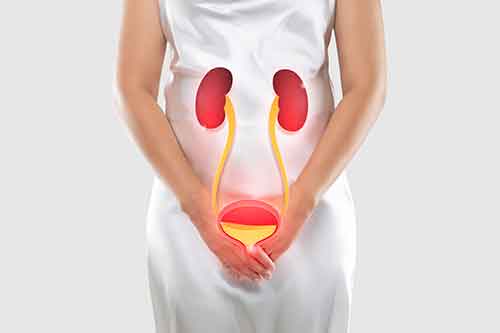Urological Conditions in Women
With the dawn of the new month, we embark on a journey to educate women about some of the urological conditions that can affect them more than men. We have invariably only been informed of some of the common conditions which form the tip of the iceberg. While common conditions such as stone disease, malignancy and congenital anomalies may be seen in both genders, certain conditions are noted to predominantly affect the fairer sex. So, let us get to know about the following conditions.

First on the list is the most commonly encountered urinary tract infection (UTI) which is seen to affect a significant percent of women at least once in their lifetime. Beyond the known culprits of poor perineal hygiene, shorter urinary passages (urethra), inadequate intake of water and withholding passing urine for long periods of time, were you aware that constipation, uncontrolled blood sugar levels and improperly treated previous infections can also significantly contribute to the incidence of UTIs? Additionally, some women experience UTI post sexual intercourse and will need prophylactic medication. More importantly, those who suffer from chronic or recurrent UTIs may feel the brunt the most – painful urination, increased number of times of passing urine (urinary frequency), strong desire to pass urine (urgency), fever, pain in the underbelly, urinary malodour and occasionally, blood in the urine. Prevention is the best cure, is an understated line when it comes to UTIs. Good perineal hygiene, timely emptying of the bladder, adequate fluid intake and good bowel habits are a few preventive measures to begin with. Timely medical advice and intervention is a must in any urinary infection.
The next commonly experienced condition is urinary incontinence or an involuntary leakage of urine i.e., issues related to bladder control. The main types of urinary incontinence are stress urinary incontinence, urge urinary incontinence and mixed urinary incontinence. So, what are each of these types of urinary incontinence? Urge urinary incontinence occurs when there is a urine leak when the patient has an urge to pass urine, i.e., by the time the patient is able to reach the restroom to relieve herself, she leaks some urine. Stress urinary incontinence is seen with raised intra-abdominal pressure, when a person coughs or strains. Mixed urinary incontinence is when both urge and stress urinary incontinence are seen. Rarely, overflow urinary incontinence may also be seen in women, where a patient has an inability to empty the bladder with accumulation of urine and the excess urine dribbles out without control. Continuous urinary incontinence is seen when there is an abnormal communication between the urinary and genital tract such as vesico-vaginal fistula and uretero-vaginal fistula. Urinary incontinence can cause severe distress and social embarrassment to patients with severe drop in quality of life. Based on the severity and type of urinary incontinence, they can be managed conservatively with options such as exercises, behavioural management and medication or with more advanced surgical procedures to maintain continence or repair the abnormal communications.
Overactive bladder (OAB) is another common urological condition experienced by women, where they experience increased urinary frequency (day and night time) and urgency with or without urinary incontinence. This can affect up to 12 percent of women. Symptoms similar to OAB can be seen with interstitial cystitis or bladder pain syndrome (IC/BPS), but pain is noted without incontinence and pain relief is experienced on passing urine. Again, like urinary incontinence, symptoms of OAB and IC/BPS can cause extreme distress to the patients leading to changes in quality of life due to the unpredictable nature of the symptoms and self-imposed social life restrictions. IC-BPS in addition can have associated conditions such as dyspareunia or painful intercourse. While symptomatic management can be initially done with medication, pelvic floor training and bladder training of the patient, few patients may need to be operated on to either increase the capacity of the bladder or to implant devices to help reroute the signalling to the bladder.
In conclusion, while we have several urological conditions overlapping with men, we also have unique anatomies and pathologies which set us apart. So armed with this information, let us spread the word and enlighten others.

Dr. Anu Ramesh
MS (GS), DNB (GS), MRCE(Ed), MCh (Urology), DNB (Urology)
Consultant Urologist
Kauvery Hospital, Chennai

